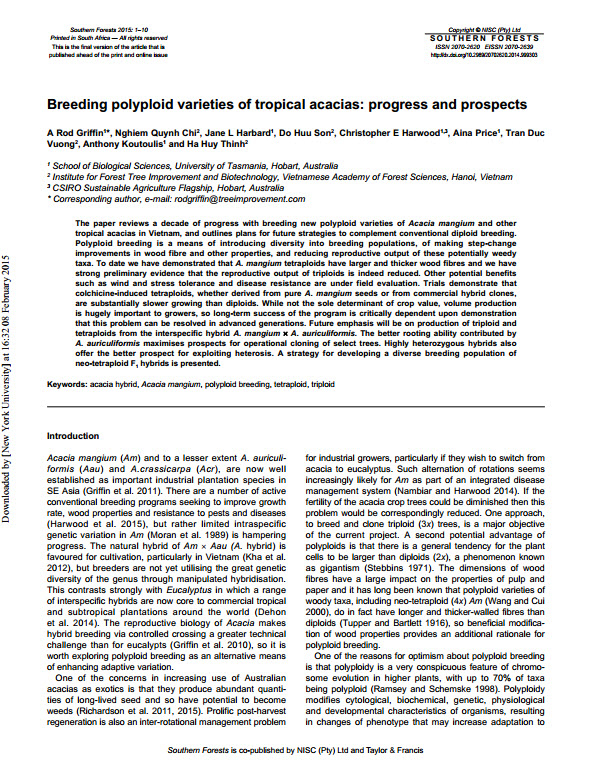Griffin AR, Nghiem CQ, Harbard JL, Do HS, Harwood CE, Price A, Tran DV, Koutoulis A, Ha HT (2015). Breeding polyploid varieties of tropical acacias: progress and prospects. . Southern Forests 77: 41-50.
The paper reviews a decade of progress with breeding new polyploid varieties of Acacia mangium and other tropical acacias in Vietnam, and outlines plans for future strategies to complement conventional diploid breeding. Polyploid breeding is a means of introducing diversity into breeding populations, of making step-change improvements in wood fibre and other properties, and reducing reproductive output of these potentially weedy taxa. To date we have demonstrated that A. mangium tetraploids have larger and thicker wood fibres and we have strong preliminary evidence that the reproductive output of triploids is indeed reduced. Other potential benefits such as wind and stress tolerance and disease resistance are under field evaluation. Trials demonstrate that colchicine-induced tetraploids, whether derived from pure A. mangium seeds or from commercial hybrid clones, are substantially slower growing than diploids. While not the sole determinant of crop value, volume production is hugely important to growers, so long-term success of the program is critically dependent upon demonstration that this problem can be resolved in advanced generations. Future emphasis will be on production of triploid and tetraploids from the interspecific hybrid A. mangium × A. auriculiformis . The better rooting ability contributed by A. auriculiformis maximises prospects for operational cloning of select trees. Highly heterozygous hybrids also offer the better prospect for exploiting heterosis. A strategy for developing a diverse breeding population of neo-tetraploid F ₁ hybrids is presented.

BÀI BÁO KHÁC